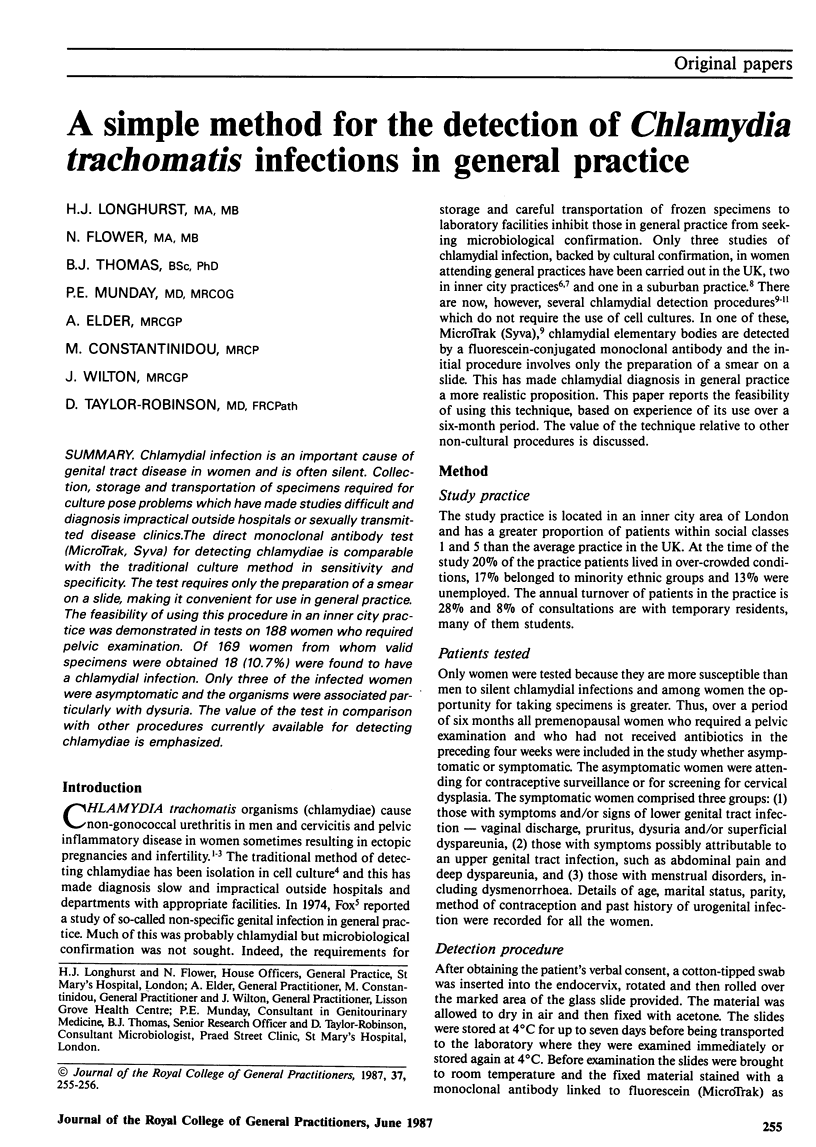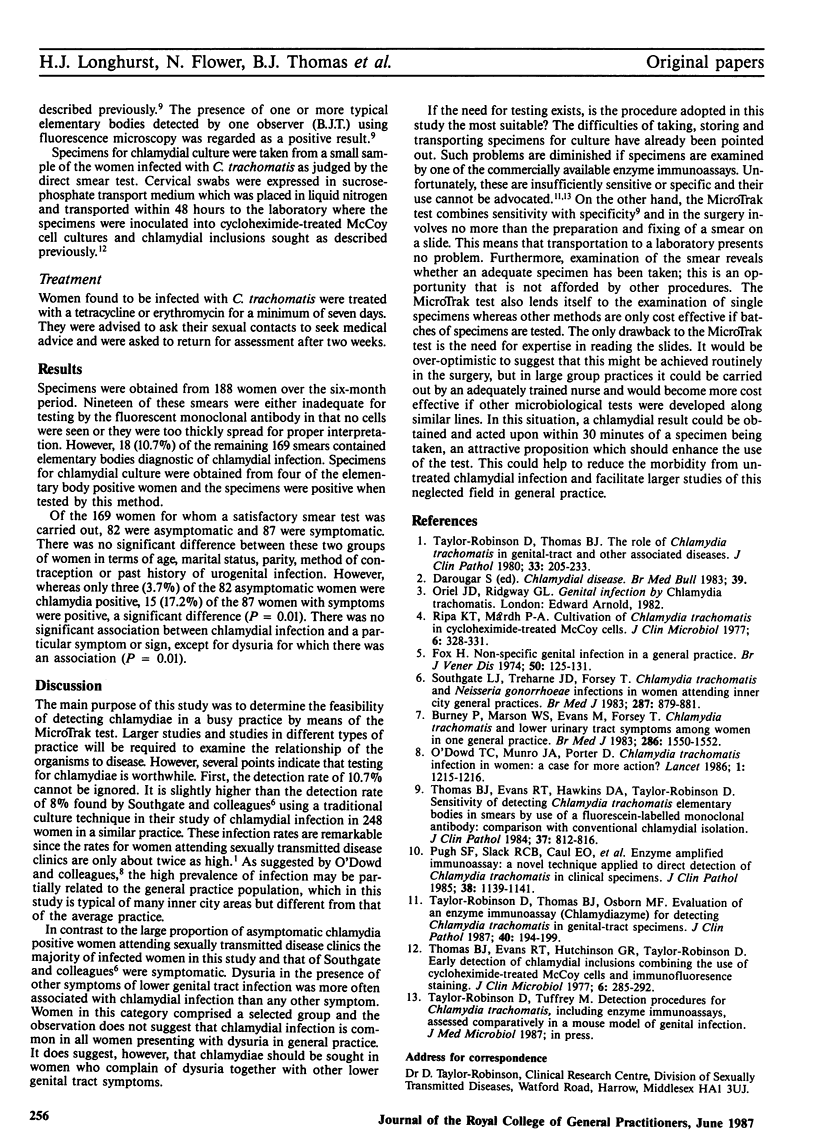Abstract
Chlamydial infection is an important cause of genital tract disease in women and is often silent. Collection, storage and transportation of specimens required for culture pose problems which have made studies difficult and diagnosis impractical outside hospitals or sexually transmitted disease clinics.The direct monoclonal antibody test (MicroTrak, Syva) for detecting chlamydiae is comparable with the traditional culture method in sensitivity and specificity. The test requires only the preparation of a smear on a slide, making it convenient for use in general practice. The feasibility of using this procedure in an inner city practice was demonstrated in tests on 188 women who required pelvic examination. Of 169 women from whom valid specimens were obtained 18 (10.7%) were found to have a chlamydial infection. Only three of the infected women were asymptomatic and the organisms were associated particularly with dysuria. The value of the test in comparison with other procedures currently available for detecting chlamydiae is emphasized.
Full text
PDF

Selected References
These references are in PubMed. This may not be the complete list of references from this article.
- Burney P., Marson W. S., Evans M., Forsey T. Chlamydia trachomatis and lower urinary tract symptoms among women in one general practice. Br Med J (Clin Res Ed) 1983 May 14;286(6377):1550–1552. doi: 10.1136/bmj.286.6377.1550. [DOI] [PMC free article] [PubMed] [Google Scholar]
- Fox H. Non-specific genital infection in a general practice. Br J Vener Dis. 1974 Apr;50(2):125–131. doi: 10.1136/sti.50.2.125. [DOI] [PMC free article] [PubMed] [Google Scholar]
- Pugh S. F., Slack R. C., Caul E. O., Paul I. D., Appleton P. N., Gatley S. Enzyme amplified immunoassay: a novel technique applied to direct detection of Chlamydia trachomatis in clinical specimens. J Clin Pathol. 1985 Oct;38(10):1139–1141. doi: 10.1136/jcp.38.10.1139. [DOI] [PMC free article] [PubMed] [Google Scholar]
- Ripa K. T., Mårdh P. A. Cultivation of Chlamydia trachomatis in cycloheximide-treated mccoy cells. J Clin Microbiol. 1977 Oct;6(4):328–331. doi: 10.1128/jcm.6.4.328-331.1977. [DOI] [PMC free article] [PubMed] [Google Scholar]
- Southgate L. J., Treharne J. D., Forsey T. Chlamydia trachomatis and Neisseria gonorrhoeae infections in women attending inner city general practices. Br Med J (Clin Res Ed) 1983 Sep 24;287(6396):879–881. doi: 10.1136/bmj.287.6396.879. [DOI] [PMC free article] [PubMed] [Google Scholar]
- Taylor-Robinson D., Thomas B. J., Osborn M. F. Evaluation of enzyme immunoassay (Chlamydiazyme) for detecting Chlamydia trachomatis in genital tract specimens. J Clin Pathol. 1987 Feb;40(2):194–199. doi: 10.1136/jcp.40.2.194. [DOI] [PMC free article] [PubMed] [Google Scholar]
- Taylor-Robinson D., Thomas B. J. The rôle of Chlamydia trachomatis in genital-tract and associated diseases. J Clin Pathol. 1980 Mar;33(3):205–233. doi: 10.1136/jcp.33.3.205. [DOI] [PMC free article] [PubMed] [Google Scholar]
- Thomas B. J., Evans R. T., Hawkins D. A., Taylor-Robinson D. Sensitivity of detecting Chlamydia trachomatis elementary bodies in smears by use of a fluorescein labelled monoclonal antibody: comparison with conventional chlamydial isolation. J Clin Pathol. 1984 Jul;37(7):812–816. doi: 10.1136/jcp.37.7.812. [DOI] [PMC free article] [PubMed] [Google Scholar]
- Thomas B. J., Evans R. T., Hutchinson G. R., Taylor-Robinson D. Early detection of chlamydial inclusions combining the use of cycloheximide-treated McCoy cells and immunofluorescence staining. J Clin Microbiol. 1977 Sep;6(3):285–292. doi: 10.1128/jcm.6.3.285-292.1977. [DOI] [PMC free article] [PubMed] [Google Scholar]


